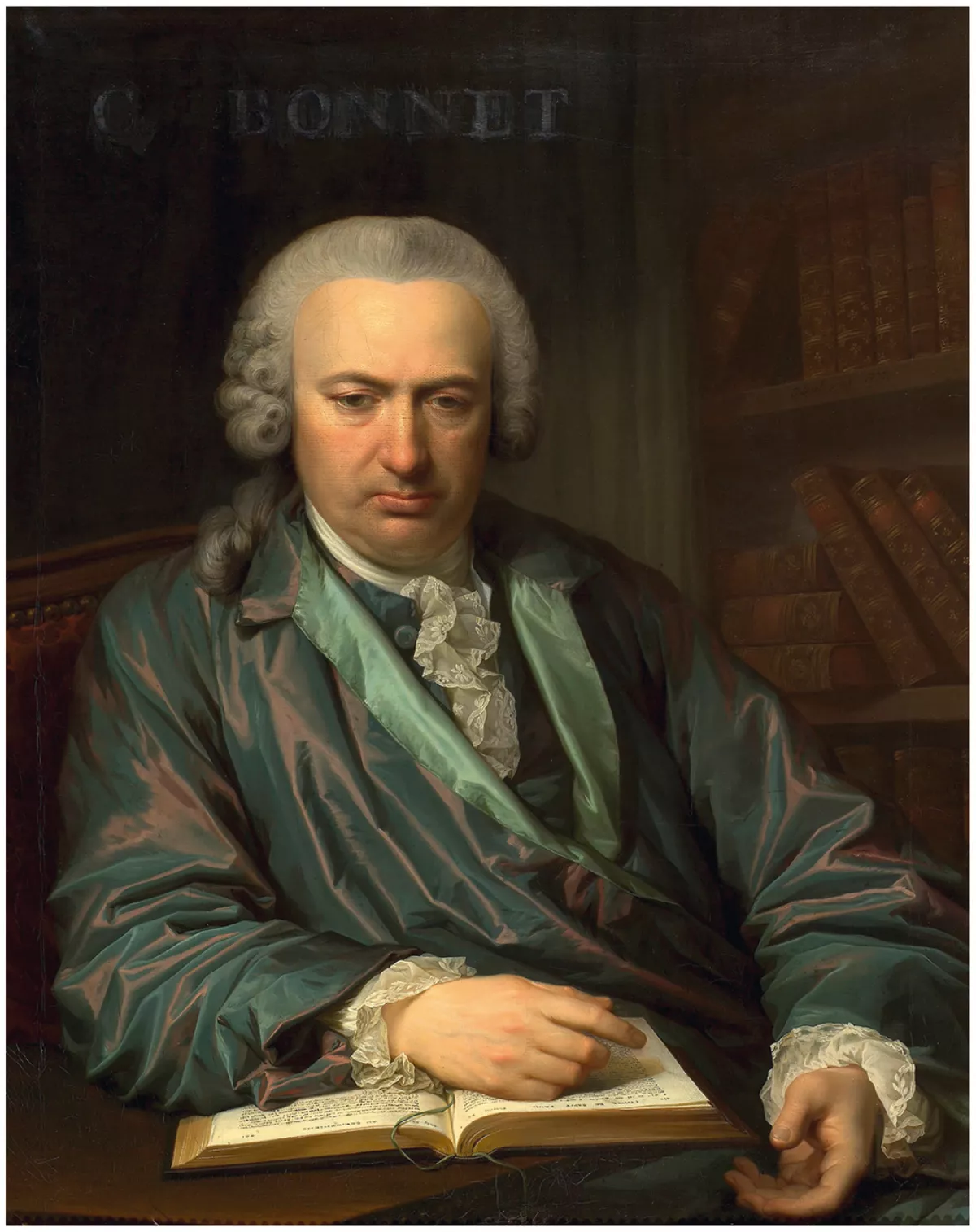 1.
1. Charles Bonnet is responsible for coining the term phyllotaxis to describe the arrangement of leaves on a plant.

 1.
1. Charles Bonnet is responsible for coining the term phyllotaxis to describe the arrangement of leaves on a plant.
Charles Bonnet was among the first to notice parthenogenetic reproduction in aphids and established that insects respired through their spiracles.
Charles Bonnet was among the first to use the term "evolution" in a biological context.
Charles Bonnet seems never to have left the Geneva region, and does not appear to have taken any part in public affairs except for the period between 1752 and 1768, during which he was a member of the republic's Council of Two Hundred.
Charles Bonnet's wife was a lady of the family of De la Rive.
Charles Bonnet made law his profession, but his favourite pursuit was the study of natural science.
Charles Bonnet procured RAF de Reaumur's work on insects, and with the help of live specimens succeeded in adding many observations to those of Reaumur and Pluche.
In 1740, Charles Bonnet communicated to the Academy of Sciences a paper containing a series of experiments establishing what is termed parthenogenesis in aphids or tree-lice, which obtained for him the honour of being admitted as the youngest corresponding member of the academy.
In 1741, Charles Bonnet began to study reproduction by fusion and the regeneration of lost parts in the freshwater hydra and other animals; and in the following year he discovered that the respiration of caterpillars and butterflies is performed by pores, to which the name spiracles has since been given.
Charles Bonnet's first published work appeared in 1745, entitled Traite d'insectologie, in which were collected his various discoveries regarding insects, along with a preface on the development of germs and the scale of organized beings.
Charles Bonnet returned to physical science, but to the speculative side of it, in his Considerations sur les corps organisees, designed to refute the theory of epigenesis, and to explain and defend the doctrine of pre-existent germs.
Charles Bonnet documented it in his 87-year-old grandfather, who was nearly blind from cataracts in both eyes but perceived men, women, birds, carriages, buildings, tapestries and scaffolding patterns.
In Philosophical Palingesis, or Ideas on the Past and Future States of Living Beings, Charles Bonnet argued that females carry within them all future generations in a miniature form.
Charles Bonnet believed these miniature beings, sometimes called homonculi, would be able to survive even great cataclysms such as the biblical Flood; he predicted, moreover, that these catastrophes brought about evolutionary change, and that after the next disaster, men would become angels, mammals would gain intelligence, and so on.
Charles Bonnet had an influence on other philosophers and pre-evolutionary thinkers; James Burnett, Lord Monboddo is known to have studied his publications on insects and to have been influenced as he developed concepts on progression of species.